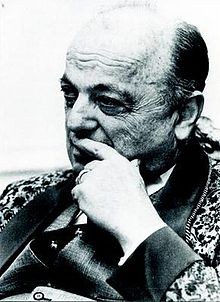-
(b.) -1919 February 18(d.)2000
Bio/Description
An American mathematician, natural philosopher, and historian of science, he was born in Los Angeles, California. After high school, he spent two years in Europe learning French, German, and Italian, and improving his Latin and Greek. His linguistic skills stood him in good stead in his later historical investigations. At Caltech he was deeply influenced by the teaching of Harry Bateman. In particular, a course in partial differential equations "taught me the difference between an ordinary good teacher and a great mathematician, and after that I never cared what grade I got in anything." He obtained a B.Sc. in Mathematics and Physics in 1941, and an MSc. in Mathematics in 1942. In 1943, he completed a Ph.D. in mathematics at Princeton University. For the rest of the decade, the U.S. Navy employed him to do Mechanics research. He taught at Indiana University 1950-61, where his students included James Serrin, Jerald Ericksen, and Walter Noll. From 1961 until his retirement in 1989, he was professor of Rational Mechanics at Johns Hopkins University. He and Noll contributed to foundational rational mechanics, whose aim is to construct a mathematical model for treating (continuous) mechanical phenomena. He was best known for developing the mathematical underpinnings of continuum mechanics; work that started in the 1960's and continued for the rest of his life. Continuum mechanics includes the study of elasticity, the bending of beams and bridges as well as the vibrations of drums, and the study of fluids, including water, air and more exotic forms like liquid crystals, which are found in laptop displays. More broadly, he helped popularize rational mechanics, a field devoted to developing a mathematical framework for mechanics as broadly defined to include mechanical systems like robotics, thermodynamics and electromagnetism. He was the founder and editor-in-chief of the journals Archive for Rational Mechanics and Analysis and Archive for History of Exact Sciences, which were unusual in several ways. Following his criticisms of awkward style in scientific writing, the journal accepted papers in English, French, German, and Latin. In addition to his original work in mechanics, he was a major historian of science and mathematics, editing or co-editing six volumes of the collected works of Leonhard Euler. Among other awards, he was the recipient of the Birkhoff Prize of the American Mathematical Society and Society for Industrial and Applied Mathematics (1978). In addition to his writings on thermodynamics, he was the author of, ?A First Course in Rational Continuum Mechanics?, Academic Press; ?The Elements of Continuum Mechanics?, Springer-Verlag and? An Introduction to the Mechanics of Fluids?, with K. R. Rajagopal, Birkhauser, Boston, 1999.
-
Date of Birth:
1919 February 18 -
Date of Death:
2000 -
Gender:
Male -
Noted For:
Developer of the mathematical underpinnings of continuum mechanics, which includes the study of elasticity, the bending of beams and bridges as well as the vibrations of drums, and the study of fluids, including water, air and more exotic forms like liquid crystals, which are found in laptop displays -
Category of Achievement:
-
More Info:


